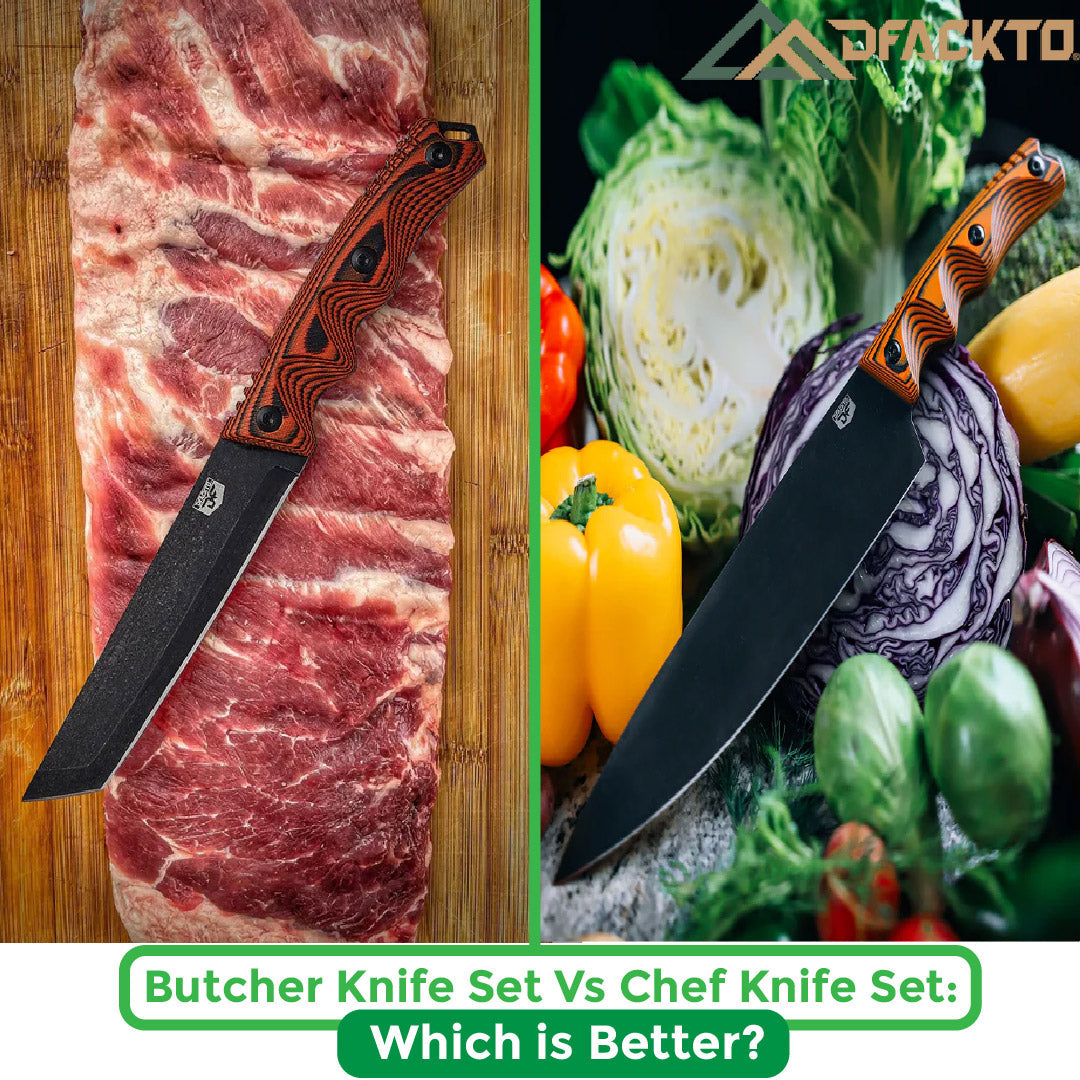When you invest in a high-quality knife, you expect more than just a sharp edge — you expect a tool that feels solid in your hand, performs reliably, and looks as good as it works. One of the most durable and sought-after materials for premium knife handles is G-10, a high-pressure fiberglass laminate used by knife makers worldwide for its resilience, grip, and resistance to environmental wear.
But even G-10 isn’t immune to the passage of time. While it won’t warp, crack, or swell like some natural handle materials, G-10 can fade or lose its luster after years of use, especially if it’s routinely exposed to sunlight, harsh detergents, or the high-heat cycles of a dishwasher.
Fortunately, restoring a faded G-10 handle is straightforward — and with a small amount of mineral oil, you can bring back the deep color and rich texture your knife had the day it came out of the box.
What is G-10?
G-10 is a fiberglass-based laminate made by stacking layers of glass cloth, soaking them in epoxy resin, and then compressing them under heat and pressure. The result is a dense, rigid, and incredibly durable material that’s:
- Lightweight yet extremely strong
- Resistant to moisture, chemicals, and temperature changes
- Naturally slip-resistant, even when wet
- Easy to shape into ergonomic handle designs
Originally developed for the aerospace and electrical industries, G-10 found its way into knife making because it offers exceptional performance in demanding environments. Tactical, survival, and culinary knives alike benefit from its grip security, toughness, and near-indestructibility.
Why G-10 Handles Fade
While G-10 is mechanically tough, its cosmetic surface finish can still be affected by long-term exposure to certain conditions:
- UV Exposure – Prolonged exposure to sunlight can cause G-10 pigments to dull, especially with lighter-colored handles.
- High-Heat and Detergent Cycles – Running knives through a dishwasher won’t structurally damage G-10, but the combination of hot water, steam, and aggressive detergents accelerates fading.
- Surface Wear – Repeated contact with gritty materials, abrasive cleaning pads, or hard surfaces can scuff the outer layer, dulling the sheen.
- Chemical Exposure – Harsh solvents or degreasers can strip the surface oils or polish that help maintain the “fresh” look of G-10.
How G-10 Compares to Other Handle Materials
Understanding why G-10 fades differently from other materials helps explain why mineral oil restoration works so well.
- Wood – Organic, warm in hand, and beautiful — but prone to swelling, cracking, or warping if not sealed and maintained. Dishwashers are especially damaging to wood handles.
- Micarta – A composite material made from layers of linen, canvas, or paper in resin. Like G-10, it’s strong, but it tends to absorb moisture more readily and develops a patina over time.
- Carbon Fiber – Sleek and high-tech, with exceptional strength-to-weight ratio. It’s less porous than G-10, but scratches and surface wear are more visible.
- Plastics & Rubberized Handles – Affordable and dishwasher-safe, but generally less durable in the long term compared to G-10, especially under heavy use.
- Glass-Filled Nylon – A rugged, lightweight polymer reinforced with glass fibers for added strength and heat resistance. It’s used in DFACKTO’s Boulder Series for its excellent durability and weather resistance. While it doesn’t quite match the slip-resistance and refined grip of G-10 found in the Interceptor Series, glass-filled nylon outperforms most other handle materials in toughness and longevity — making it a close second to G-10 for hard-use environments.
The advantage of G-10 is that it won’t degrade structurally in the dishwasher like wood or soft composites. The drawback is that repeated dishwasher cycles and UV exposure can pull color from the handle and make it appear dry.
Why Mineral Oil Works on G-10
When G-10 fades, it’s not because the underlying material has weakened — the surface fibers have simply lost the sheen that once refracted light evenly. Applying mineral oil:
- Rehydrates the surface visually
- Enhances depth of color and texture contrast
- Creates a slight luster that mimics the original factory finish
- Offers a mild protective layer against further fading
Mineral oil is also food-safe, inexpensive, and widely available, making it a go-to maintenance option for culinary knives.
Step-by-Step: Restoring a G-10 Knife Handle with Mineral Oil
You don’t need a workbench or specialized tools — just a few common items and 10 minutes of your time.
What You’ll Need:
- Food-grade mineral oil
- A soft, lint-free cloth (microfiber works best)
- Mild dish soap and warm water
- A clean, dry workspace
Step 1: Clean the Handle
Wash the handle with mild dish soap and warm water to remove any dirt, grease, or kitchen residue. Avoid abrasive scrubbers that can further dull the surface. Pat dry with a towel.
Step 2: Apply Mineral Oil
Put a few drops of mineral oil directly onto the cloth or handle. Work the oil evenly over the entire surface, pressing lightly to ensure it fills any micro-textures.
Step 3: Let It Set
Allow the oil to sit for 5–10 minutes. This gives it time to settle into any surface irregularities and enhance color depth.
Step 4: Buff the Handle
Using a clean section of the cloth, buff away any excess oil until the handle feels dry to the touch. You should notice the color and texture “pop” immediately.
Step 5: Repeat as Needed
For heavily faded handles, you can repeat the process once or twice for maximum effect.
How Often Should You Oil G-10?
Unlike wood, G-10 doesn’t need frequent oiling. Most users find that once or twice a year is enough to maintain color and appearance. If your knife sees daily outdoor use in bright conditions, you might oil it quarterly.
Preventing Future Fading
- Avoid prolonged UV exposure — Store knives out of direct sunlight.
- Skip the dishwasher — Handwashing is gentler on all handle types, even G-10.
- Use mild cleaners — Avoid harsh solvents or industrial degreasers.
- Dry promptly — While G-10 won’t absorb water, drying prevents mineral spots and detergent residue.
The Bigger Picture: Why Handle Material Matters
In a knife’s performance, the handle is as critical as the blade. Comfort, control, and safety all depend on a handle that stays secure in your grip under wet, greasy, or extreme conditions.
G-10 excels here — it’s lightweight, won’t swell or shrink with moisture, and has a naturally grippy texture. That’s why it’s the handle material of choice for DFACKTO Interceptor Series knives, trusted in both military and rugged outdoor environments.
Final Thoughts
Fading doesn’t mean failure. A well-made G-10 handle that’s lost some of its color still retains all of its structural integrity. With a simple application of mineral oil, you can restore that deep, factory-fresh look in minutes.
Whether your knife lives in a professional kitchen, a hunting pack, or a field kit, maintaining your handle ensures it looks as sharp as it performs. If you’ve never tried restoring your G-10 handle before, now’s the time — you might be surprised at how much of a difference such a small step can make.
For outdoor and culinary professionals who demand the best, the DFACKTO features precision blades paired with G-10 and glass-filled nylon handles designed for extreme performance and long-term durability. Explore the full line at dfackto.com.



